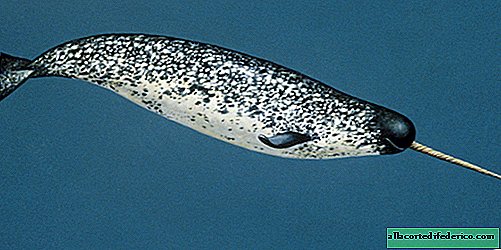How narwhals use their unusual tusk
Narwhals are one of the most mysterious marine mammals on the planet. They live in the Arctic Ocean, in the area of floating ice. The bulk of their population is concentrated off the coast of Canada, but there are groups of narwhals in the area of Svalbard and Franz Josef Land. An interesting feature of these animals is the presence of an unusual tusk on the head of males. Sometimes animals with two tusks are found, and occasionally this peculiar horn is found even in females. The narwhal tusk is one of his two teeth, which grows up to 2-3 meters in length, while the males' body length is about 5 meters. The sizes of females are more modest, about 3-4 meters. The horn is hollow inside and quite light: with its impressive size, it weighs only 10 kg. These tusks are very durable, but at the same time they have some flexibility and can deviate up to 30 cm in both directions. It seems that such a horn makes animals clumsy and even makes movement difficult. Scientists argue for a long time about the purpose of this unusual part of the body. It was assumed that he serves the males to clarify relations with their relatives in the struggle for females or to protect themselves from marine predators. The version was also considered that with the help of a tusk animals can navigate in space, since it is penetrated by nerve endings and can serve as an echo-locator. But, as the WWF biologists recently found out, narwhals use a tusk for other purposes.

Using unmanned aerial vehicles, researchers monitored a group of narwhals in the Canadian waters. Aircraft, which were specially designed compact so as not to attract the attention of animals and not cause them to be wary, followed the narwhals at low altitude. After some time, scientists managed to get unique shots that helped solve the mystery of the narwhals. It turns out that with their horn, these marine mammals kill fish. The frames clearly show how the narwhals make characteristic movements, striking a flock of cod, causing confusion, and then swallow immobilized prey.
It is likely that the tusk is not only for fishing, it may have some other functions that are still unknown to biologists. But the fact that enterprising narwhals adapted this unique part of their body for food is now a proven fact.


















